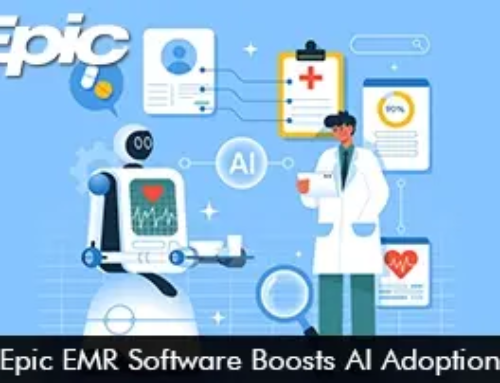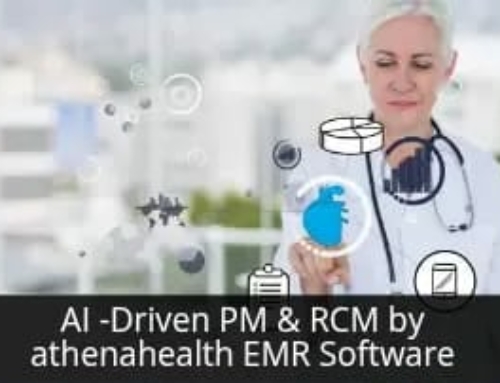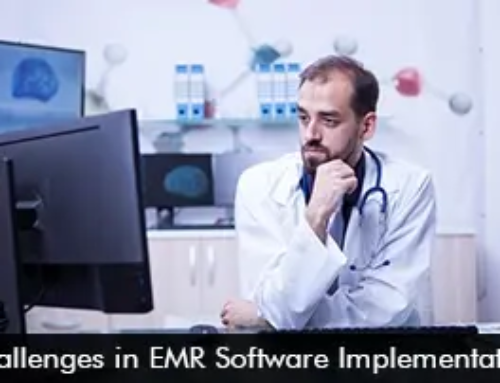In the digital age, EMR software plays a pivotal role in revolutionizing healthcare delivery. It improves patient care and streamlines administrative processes. In this blog, we will explore how electronic health records (EHR) software enables practitioners to navigate the digital age of medicine.
The Digital Age in Healthcare
The digital age in healthcare represents a seismic shift from traditional analog practices to a high-tech, data-driven ecosystem. Several factors are driving this transformation:
Digital Records: The transition from paper medical records to digital ones has made it easier to access and share patient information securely. Digital records are also more efficient and can be updated in real-time.
Interconnectivity: The rise of the internet and mobile devices has brought about seamless communication and data exchange between healthcare providers. Wearable health devices are an added source of data and communication.
Big Data and Analytics: The collection and analysis of massive amounts of healthcare data have opened up new possibilities for treatment, research, and public health initiatives.
Telemedicine: Digital technology has enabled the remote provision of medical services, allowing patients to consult with healthcare providers from the comfort of their homes.
Artificial Intelligence: AI-driven technologies are aiding in the diagnosis of diseases, treatment planning, and the identification of healthcare trends.
In this digital age, EMR software is at the forefront of healthcare’s digital revolution, playing a multifaceted role in transforming how healthcare is delivered, managed, and improved.
The Power of EMR Software in the Digital Age
Comprehensive Patient Records: EMR software includes medical history, test results, treatment plans, medication records, and more. This comprehensive overview allows healthcare providers to make informed decisions and provide personalized care.
Streamlined Workflows: The digital age demands efficiency and speed. EMR software streamlines healthcare workflows. It reduces the need for manual data entry, paperwork, and redundant processes. This allows healthcare professionals to focus more on patient care and less on administrative tasks.
Enhanced Data Security: Data security is paramount in the digital age, especially in healthcare. EMR software provides robust security measures to protect sensitive patient information from unauthorized access, ensuring compliance with data protection regulations like HIPAA (Health Insurance Portability and Accountability Act).
Real-time Updates: With EMR software, patient records can be updated in real-time. This means that healthcare providers always have access to the most current patient information, promoting timely and accurate decision-making.
Decision Support Tools: Many EMR systems come equipped with decision support tools. These provide reminders, alerts, and clinical guidelines to help healthcare providers make evidence-based decisions and adhere to best practices.
Interoperability: EMR software facilitates interoperability by allowing the exchange of patient information with other healthcare systems and organizations. This is crucial for coordinated care and referrals.
Telemedicine Integration: As telemedicine gains momentum, EMR software is often integrated with telehealth platforms. This allows healthcare providers to conduct virtual consultations, access patient records, and prescribe treatments remotely.
Data Analytics: EMR software supports data analytics, which enables healthcare providers to mine patient data for insights. This can help in identifying trends, predicting disease outbreaks, and improving overall healthcare delivery.
Patient Engagement: Patients can access their records, schedule appointments, request prescription refills, and communicate with their healthcare providers through secure patient portals. This fosters active involvement in their healthcare journey.
Real-World Examples of EMR Software in Action
Several healthcare institutions and organizations have already embraced EMR software to navigate the digital age and reap its benefits:
Mayo Clinic: The Mayo Clinic, a renowned healthcare institution, has integrated EMR software with decision support tools. This has resulted in improved patient outcomes, reduced errors, and streamlined workflows.
Kaiser Permanente: Kaiser Permanente, one of the largest healthcare providers in the United States, has successfully used EMR systems to enhance patient engagement. Patients can access their health records and communicate with healthcare providers conveniently through the organization’s patient portal.
Cleveland Clinic: The Cleveland Clinic, another prominent healthcare organization, has integrated EMR software with telemedicine platforms to provide remote care services. This has expanded access to healthcare for patients and improved the clinic’s ability to respond to health crises like the COVID-19 pandemic.
Challenges and Considerations
Despite the many advantages of EMR software in the digital age, there are some challenges and considerations to bear in mind:
Data Privacy: Ensuring the privacy of patient data is a fundamental concern. Healthcare providers must implement robust data security measures and adhere to legal and regulatory requirements to safeguard sensitive information.
Interoperability: While EMR systems are designed to be interoperable, achieving seamless data exchange among different systems and organizations can still be a challenge. Standardized data formats and protocols are essential for overcoming this issue.
User Adoption: Healthcare providers must invest in training and support to ensure that all staff members are proficient in using EMR software effectively. User-friendly interfaces and streamlined workflows are key to successful user adoption.
Cost: The initial cost of implementing EMR software, including training, hardware, and software, can be substantial. However, the long-term benefits often outweigh the initial investment.








